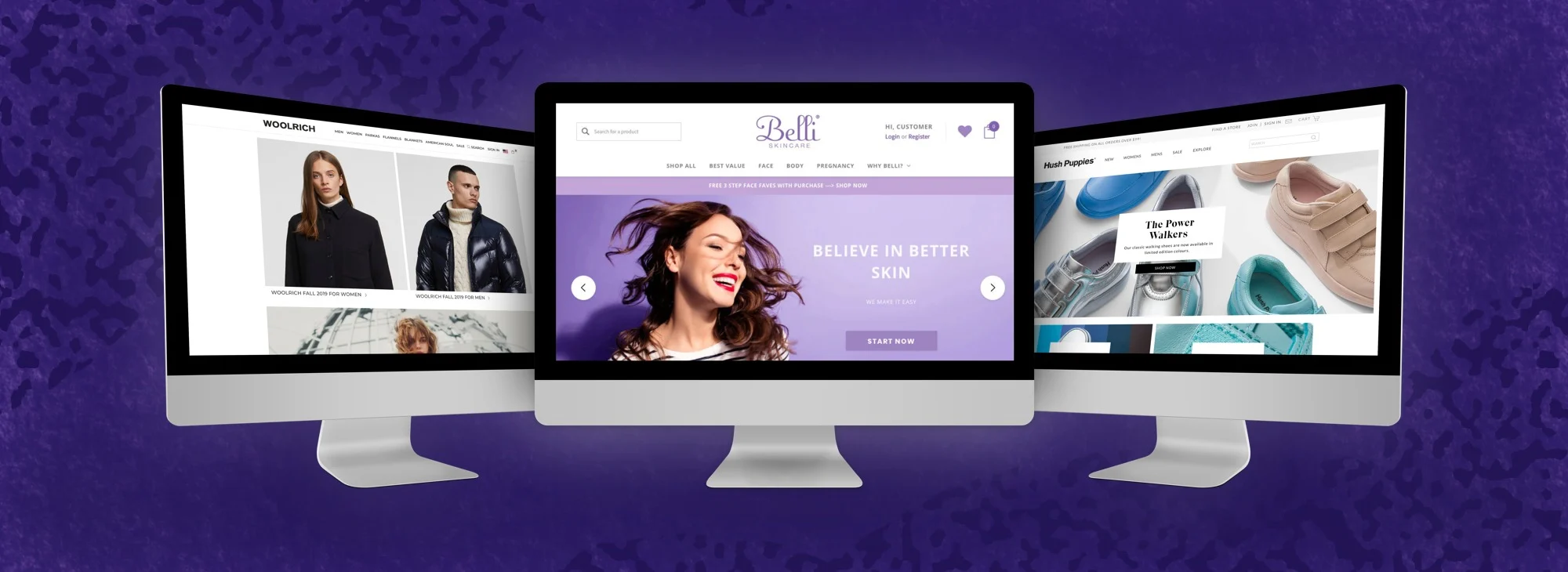Why Professional Website Design is a Key Factor in Your Marketing Strategy
Why Professional Website Design is a Key Factor in Your Marketing Strategy
Blog Article
The Ultimate Overview to Modern Internet Site Layout Trends
In the ever-evolving digital landscape, modern-day site style trends play a vital role fit user experience and involvement. From the surge of minimal design concepts that focus on simpleness to the impact of strong typography in defining brand identity, each component contributes to a natural on-line existence. The focus on mobile-first and responsive techniques, along with innovative microinteractions, better enhances use. The expanding focus on sustainable internet layout techniques reflects a commitment to environmental duty. These patterns jointly elevate essential questions regarding the future of reliable web layout and what it means for organizations and customers alike.
Minimalist Style Concepts
Minimal layout concepts stress the idea that less is much more, advocating for simpleness and functionality in visual interaction. This technique remove unneeded components, concentrating instead on important elements that convey the designated message successfully. By prioritizing clearness, minimal design improves individual experience, permitting visitors to navigate web sites effortlessly.
Core tenets of minimal design include making use of ample white room, which develops a feeling of balance and company. This adverse area not only guides the audience's attention to crucial elements however likewise cultivates a calming aesthetic ambience. Additionally, a minimal shade combination is often used, making use of monochromatic plans or soft hues to keep visual communication and protect against frustrating the user.
Typography plays a critical duty in minimal style, where clear font styles are picked for their simplicity and efficiency in interacting material. Inevitably, minimal layout principles grow a concentrated atmosphere that encourages customers to involve with the content, improving the general performance of modern web site style.
Bold Typography Selections
Accepting vibrant typography options has become a specifying feature of contemporary web site layout, as it properly captures interest and communicates solid messaging. Developers are progressively making use of typography not just as a useful component however as a vital aesthetic component that improves the overall aesthetic and customer experience.

Furthermore, the association of strong typography with minimalist design principles enables striking contrasts, enhancing readability while preserving visual appeal. Making use of whitespace around vibrant text further emphasizes its relevance, making certain that the message resonates with the target market.
As digital landscapes become much more competitive, leveraging strong typography enables brand names to separate themselves and leave a long-term impact. The cautious option of fonts and their application can stimulate feelings, establish tone, and drive action, making strong typography an essential device in contemporary internet site style. Inevitably, it is a powerful method to improve narration and make sure that crucial messages are not only seen however additionally felt.
Receptive and Mobile-first Style
Responsive and mobile-first style has actually arised navigate to this site as an important concept in contemporary website growth, reflecting the enhancing dependence on mobile phones for accessing on-line material. As user habits changes towards mobile surfing, developers must prioritize creating experiences that adjust flawlessly across various display sizes and resolutions.
A responsive layout guarantees that a site instantly adjusts its layout, images, and capability based on the gadget being made use of. Mobile-first design supporters for developing websites originally for smaller screens, ultimately scaling up to larger displays.
Carrying out responsive and mobile-first concepts not just accommodates user preferences yet likewise lines up with search engine optimization (SEARCH ENGINE OPTIMIZATION) techniques. Major internet search my link engine, like Google, prioritize mobile-friendly web sites in their rankings, making it critical for companies to embrace these style strategies. In an affordable digital landscape, welcoming mobile-first and responsive layout is not just a choice; it is necessary for making sure access and interaction with a varied target market.
Engaging Microinteractions
Microinteractions play a crucial duty in improving user involvement and overall internet site experience, particularly in the context of mobile-first and receptive layout. These refined style components supply prompt feedback to users, making communications a lot more user-friendly and delightful. Instances consist of button computer animations, notification signals, and loading indications, which not only guide customers yet also produce a sense of link with the user interface.
Integrating engaging microinteractions can dramatically boost use by lowering cognitive load. When customers get visual or auditory responses upon doing activities, such as clicking a button or submitting a kind, they feel more confident in their options. This cultivates a Continue smoother navigation experience, eventually increasing individual retention.

As website layout fads continue to progress, the relevance of microinteractions can not be overemphasized. They work as the refined yet effective touchpoints that transform normal interactions right into phenomenal experiences, therefore raising the total efficiency of modern-day website design.
Sustainable Website Design Practices
Sustainable internet design techniques are coming to be progressively necessary as the digital landscape expands and environmental worries increase. Designers and programmers are acknowledging their duty to produce sites that not only offer customer demands yet also minimize environmental impact. This approach incorporates a number of key techniques.
First of all, enhancing power intake is extremely important. Web sites should be created to load quickly and efficiently, which minimizes web server power usage and enhances individual experience. Techniques such as picture compression, minimizing HTTP demands, and making use of modern-day coding techniques contribute substantially to this goal.
Second of all, picking green hosting carriers is crucial - website design. Many holding firms are currently powered by renewable resource sources, enabling web sites to run in a much more lasting way. This option mirrors a dedication to decreasing carbon impacts
Moreover, embracing a minimal design can improve sustainability. Less aspects on a page bring about much less data transfer, which not only accelerates packing times however also conserves sources.
Last but not least, promoting digital availability makes sure that sites get to a larger target market without unnecessary bloat, lining up user experience with ecological responsibility. By integrating these sustainable techniques, internet designers can add positively to both user involvement and the planet's well-being.
Verdict
In summary, contemporary web site style patterns highlight the combination of minimalist principles, bold typography, and receptive layout to improve customer experience. Taking on these fads is crucial for developing impactful electronic experiences that resonate with individuals in a progressively affordable on-line landscape.
In the ever-evolving digital landscape, modern web site style trends play an important role in shaping customer experience and engagement. By prioritizing clarity, minimalist design enhances customer experience, enabling visitors to browse websites effortlessly.
Ultimately, minimal layout concepts cultivate a concentrated environment that motivates users to involve with the content, boosting the general performance of modern web site style.Microinteractions play an essential function in boosting individual engagement and general site experience, especially in the context of mobile-first and receptive layout.In summary, contemporary web site style patterns stress the integration of minimal principles, bold typography, and responsive layout to improve user experience.
Report this page